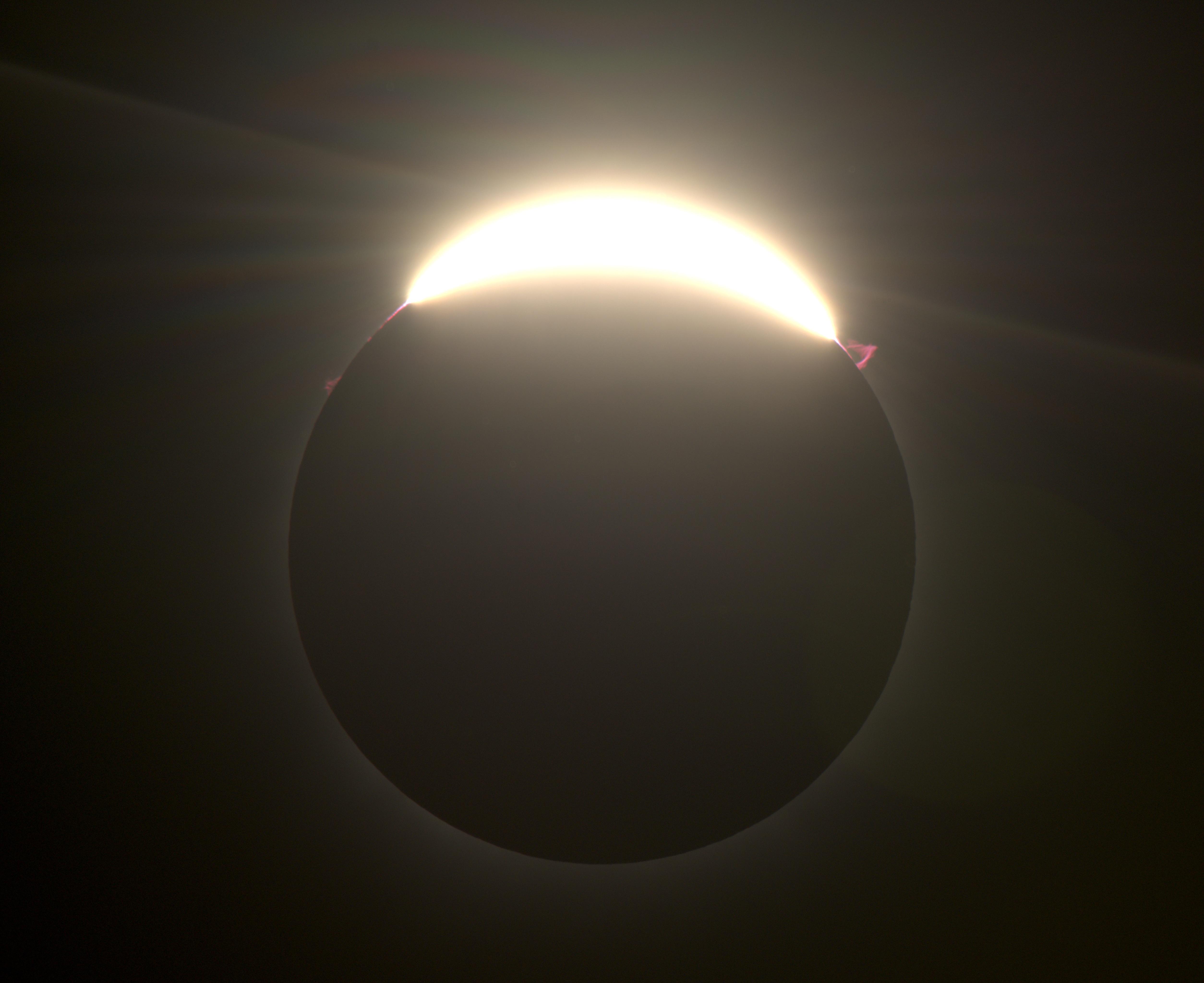RawSpace
771
19
0

Most of these were taken with a Nikon Z 7ii 45.7 MP full-frame mirrorless camera (image size 8288 x 5520 pixels), and a 150-600mm lens with 2x lens doubler, for an effective focal length of 1200mm. For the partial phase, I used a Baader solar film filter. My camera was mounted on a Sky-Watcher Star Adventurer equatorial tracking mount [that mostly worked], atop a super-compact Peak Design travel tripod base. I automated the totality photos with Eclipse Orchestrator software on my Windows laptop. Although the software's timing was a few seconds off, it still managed to capture the essentials (Baily's beads, diamond ring, prominences, and corona).
The forecast called for 77% cloud cover, so we relocated a couple towns to the west where the forecast was only for 55% cover - even though it meant shaving off precious tens of seconds from our totality duration. 30 minutes before totality, the clouds thickened and it looked like we would be foiled - but miraculously, just a few minutes before totality the clouds just dissipated in a circle above our heads, and we were gifted with perfect viewing conditions!
This image highlights some solar prominences. The "arm" left of center is about 8.5 Earth diameters long, and stretches more than 5 Earths above the Sun's surface!

I took this image a few moments after the Moon began passing in front of the Sun. The dark splotches are sunspots, planet-sized regions of "cooler" plasma caused by strong magnetic fields. These magnetic fields can spawn solar flares or coronal mass ejections. At full size you can see the sunspot's dark umbra (3500° C), surrounded by its penumbra (5500° C). The large sunspot near the center is more than 3 times the size of Earth!
The rippled appearance of the Sun's edge is caused by optical distortions in our own atmosphere, though some of the roughness of the Moon's edge is actually terrain (mountains, craters).

Sunspot about to get covered by the Moon.

Approaching totality; solar filter still on.

"Diamond ring" effect as the last light of the Sun's bright photosphere is about to be eclipsed by the Moon. Now you can start to see some red solar prominences - giant eruptions of plasma that happen all the time.

Prominences become more prominent as the total eclipse begins.

Totality! You would see more red prominences on the right side of the Sun, except the Moon is in the way. Since the Moon was closer to the Earth than usual during this eclipse, it "overlapped" the Sun more on either side. Consequently, totality lasted a whopping 4.5 minutes!

Different solar features have different brightnesses. With a longer camera exposure, we can see more of the *solar corona* - particles of plasma (super-hot ionized gas) streaming away from the Sun, pushed by "light pressure" and the Sun's massive magnetic fields. This material continues flowing away from the Sun, becoming the "solar wind" which reaches out toward interstellar space.

An even brighter picture of the solar corona. I'm always struck by how *uneven* the corona is.

"Baily's beads" effect, as the Sun's bright photosphere begins to peek through valleys and crevices on the Moon's limb.

The Sun begins to emerge from behind the Moon, as totality ends. You can still see some red solar prominences.

These wider-angle shots were taken with my old Nikon D90 DSLR camera, and a 24-70 f/2.8 lens. You can see more of the solar corona as it streams away from the Sun.

By happy accident, this wide shot of the end of totality caused a lens flare, and a starburst optical effect.
GanjaPlanet
Thanks for posting your fantastic shots! I enjoyed reading your detailed descriptions and explanations of your equipment.